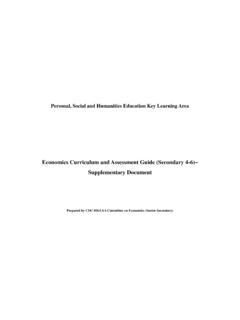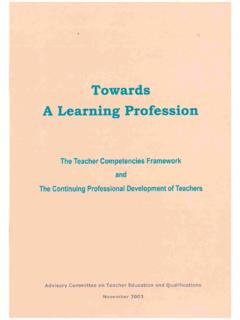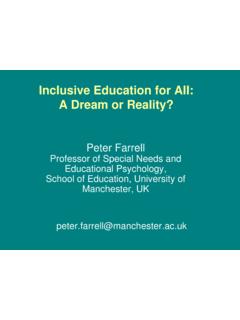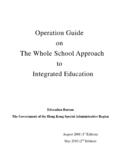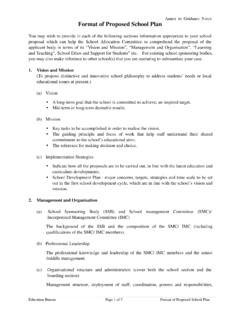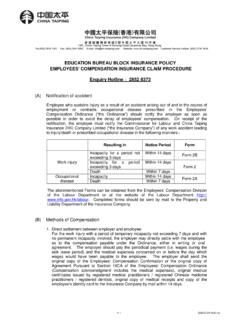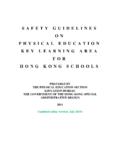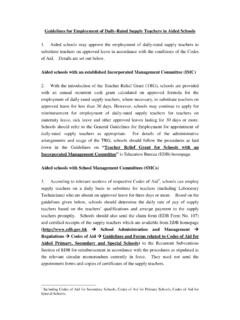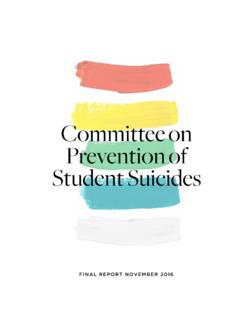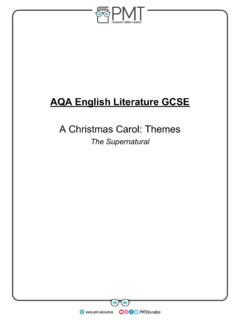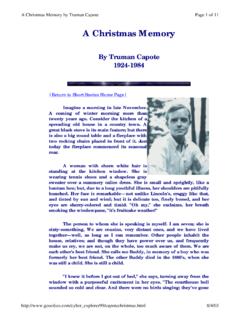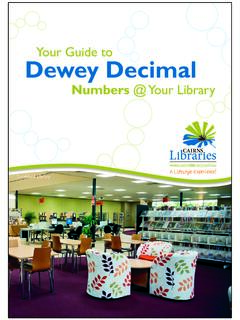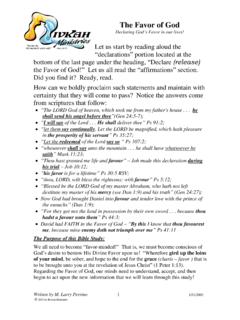Transcription of Using Short Stories in the English Classroom
1 Regional NET Coordinating TeamNET SectionCDIEDBA ugust 2012 Using Short Storiesin theEnglish July 31, 2012 12:34:47 About the Learning English through Short Stories elective moduleThe Learning English through Short Stories module is designed to introduce learners to the world of Short Stories , encouraging them to read, write and tell them. The activities that learners engage in should aim to develop their understanding of the major features of Short Stories , their language skills, cultural awareness, critical thinking skills and creativity. By the end of the module, learners are expected to write a story or develop one from a given story module comprises the following three parts:Part 1: Students will identify and understand the key features of a Short story and read Short Stories with 2: Students will read and write specific aspects of a Short story such as setting, character, theme, dialogue, opening and closing, and they will start writing their own story for the module.
2 Part 3: Students will practise oral and storytelling skills by sharing a story with the class. They will also finalise the draft for their module story and perform it. (Adapted from the English Language Curriculum and Assessment Guide (Secondary 4 - 6), CDC & HKEAA, 2007) Rationale for this publicationIn NETworking: Using Short Stories in the English Classroom , you will find teaching resources that are designed to support the Learning English through Short Stories elective module in the Three-year Senior Secondary English Language Curriculum. Many of the materials in this book have been used in the professional development workshops for Shorts : A Short Story Writing Competition organised by the NET Section. The workshop materials have been revised and updated for this publication to be used more generally in the elective module on Short this resource package is designed to be a companion to the Short Stories elective module, it is hoped that teachers will also find the materials useful as an integral part of the school-based English Language July 31, 2012 12:34:48 The NET Section would like to thank the following writers for granting us permission to use their original Short Stories and ideas in this publication:Stuart Mead, NET Chong Gene Hang CollegeAdrian Tilley, former NET Jockey Club Ti-I CollegeFor contributing ideas on the use of peer response groups, we are grateful to.
3 Helen Wong, English Panel Chair United Christian College (Kowloon East)We also appreciate the many teachers who have shared ideas and materials with us on the teaching of Short Stories through regional cluster meetings and email exchanges. Although we are not able to use every idea, we appreciate all the good work that is happening in Hong Kong schools in preparation for the Short Stories elective module. The following prize-winning Short Stories from Shorts : A Short Story Writing Competition have been selected for this publication and are available on the Resource CD: Shorts 2010: The Magic Door by Alexandria Lee Yik-ki, Christie C. Cheng, Anthea Pang Yin-seng and Nicole Hurip from Marymount Secondary School Shorts 2011: The Machine by Felix Shih Y. Y., Jeremy Chan Chun-ming, Trevor Sham Tsz-ho and Cheung Chi-kwan from Wah Yan College, Hong Kong The following prize-winning films from Clipit : A Student-created Film Competition have been selected for this publication and are available on the Resource CD: Clipit 2010: Untitled film by Sprindy Wong Yi-man, Sam Kok Man-chun, Ken Ho Cheuk-him and Watery Choi Chin-wa from Po Leung Kok Tang Yuk Tien College Clipit 2010: The Precious Thing by Hong Kiu, Tang Pui-shan, Kwan Siu-hoi, Lam Sze-wa and Wong Shing-lung from Hoi Ping Chamber of Commerce Secondary School July 31, 2012 12:34:48 Introduction AcknowledgementsPart 1: Reading and Appreciating Short Stories History of the Short Story.
4 Selecting Suitable Short Stories ..Supporting Student Reading .. Part 2: Writing Short StoriesOrganising the Writing Activity ..Planning a Short Story ..Developing Characters .. Describing the Setting ..Writing Dialogue ..Completing the Story ..Part 3: Telling StoriesSharing Stories ..The Module Story .. Using Clipit Films ..Appendix: The Knock at the Door by Stuart Mead .. This icon indicates that a document is available on the Resource CD. July 31, 2012 12:34:48 Resource CD ContentsPart 1: Reading and Appreciating Short StoriesHandouts Worksheets Answer keys PowerPoints Part 2: Writing Short StoriesHandouts Worksheets Answer keys PowerPoints Assessment FormsPart 3: Telling StoriesHandouts Worksheets Answer keys PowerPoints Assessment FormsResources Clipit FilmsShort StoriesPublications and July 31, 2012 12:34:48 Part 1 Reading and Appreciating Short StoriesHistory of the Short Story.
5 2 Selecting Suitable Short Stories .. 11 Supporting Student Reading .. July 31, 2012 12:34:482 History of the Short StoryA myth is a traditional story that explains the beliefs of a people about the natural and human world. The main characters in myths are usually gods or supernatural heroes. The Stories are set in the distant past. The people who told these Stories believed that they were true. A legend is a traditional story about the past. The main characters are usually kings or heroes. Some examples of well-known legends include the tales of Odysseus from Ancient Greece, Beowulf from the Norse lands and King Arthur from Old England. Like myths, legends were thought to be true. Handout :Myths and LegendsFolkloreStories are an important part of every culture. Short Stories have their roots in folklore, or the oral tradition of storytelling.
6 In the oral tradition, Stories were told to explain beliefs about the world ( myths), to remember the great deeds of past kings and heroes ( legends), to teach moral principles ( fables and parables) or simply for the sake of entertainment ( folktales and fairy tales). The following handout on the Resource CD contains information on myths and 1 - Reading and Appreciating Short StoriesHistory of the Short July 31, 2012 12:34:483A fable is a brief story intended to teach a moral lesson. The main characters are usually animals, objects in nature ( mountains, lakes, stones) or forces of nature ( the sun, the wind, the rain), which are given human qualities. The most famous fables in Western tradition are Aesop s fables from Ancient Greece. There are also many well-known fables from China, India and other Asian parable is a brief story that illustrates a moral principle through the use of metaphor.
7 Unlike fables, the main characters of parables are human most widely-read parables in Western tradition are the parables of Jesus in the New Testament of the Bible. There are also many parables from the Buddhist tradition and from ancient Chinese philosophers like Confucius, Mencius and Han Fei handout contains information on fables and :Fables and ParablesPart 1 - Reading and Appreciating Short StoriesHistory of the Short July 31, 2012 12:34:494A folktale is an anonymous story passed on through generations by word of mouth. Folktales are often timeless and placeless, with formulaic openings like: Once upon a time, in a faraway kingdom, there lived an old man and an old woman in a small cottage in the Folktales were told as a form of entertainment. Folktale is a general term that can include a wide range of traditional narratives, such as myths, legends, fables and fairy fairy tale is a traditional folktale involving imaginary creatures such as fairies, wizards, elves, trolls, gnomes, goblins and fire-breathing dragons.
8 Handout :Folktales and Fairy TalesThis handout contains information on folktales and fairy tales. Fairy tales are more than true: not because they tell us that dragons exist, but because they tell us that dragons can be beaten. G. K. ChestertonPart 1 - Reading and Appreciating Short StoriesHistory of the Short July 31, 2012 12:34:495A ghost story is a story about ghosts or other supernatural beings. In cultures all over the world, ghost Stories have been told and passed down orally from generation to generation. These Stories reflect the superstitious fears and beliefs that people had in various cultures. Stories about witches, ghosts, goblins, vampires, werewolves and all sorts of land and sea monsters came out of the oral tradition of tall tale is a story with unbelievable elements that are exaggerations of the truth.
9 The characters are usually heroes that are larger than life . Many tall tales are based on actual people. The tall tale is a part of the American folktale tradition. Some famous examples include Johnny Appleseed, Davy Crockett, Paul Bunyan, John Henry and Pecos trickster tale is a story involving a character, usually an animal, who likes to play tricks on other characters. Trickster tales are common in many cultures. Cartoons like Bugs Bunny and the Road Runner are based on trickster tales. This handout contains information about ghost Stories and other tales from the oral tradition, such as tall tales, trickster tales and urban : ghost Stories and Other TalesPart 1 - Reading and Appreciating Short StoriesHistory of the Short July 31, 2012 12:34:496 These Stories are available in illustrated children s books and in simplified readers ( Macmillan Readers, Oxford Bookworms Library, Penguin Longman Readers).
10 Handout :The Early Literary TraditionAn urban legend, also known as an urban myth, is a story that is thought to be true, but is usually not. Urban legends may contain elements of truth, but they are usually exaggerated and sensationalised. Television programmes such as Ripley s Believe It or Not! (1949-1950, 1982-1986, 2000-2003), Beyond Belief: Fact or Fiction (1997-2002), Mostly True Stories : Urban Legends Revealed (2002-2008), Mythbusters (2003-present), and Urban Legends (2007-present) have helped popularise urban legends in recent times. Urban legends are also commonly spread by e-mail. Part 1 - Reading and Appreciating Short StoriesHistory of the Short StoryThe Early Literary TraditionThe first Stories to be written down were Stories from the oral tradition, such as Aesop s Fables and the many other fables, folktales and fairy tales recorded by storytellers and story collectors around the following handout contains information about some of the earliest Stories from the oral tradition to be preserved in writing as part of the literary tradition in July 31, 2012 12:34:497 Many of these Stories are available in simplified readers ( Macmillan Readers, Oxford Bookworms Library, Penguin Readers).
